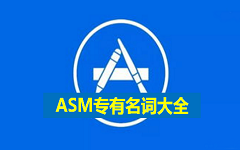Current work in named entity recognition (NER) uses either cross entropy (CE) or conditional random fields (CRF) as the objective/loss functions to optimize the underlying NER model. Both of these traditional objective functions for the NER problem generally produce adequate performance when the data distribution is balanced and there are sufficient annotated training examples. But since NER is inherently an imbalanced tagging problem, the model performance under the low-resource settings could suffer using these standard objective functions. Based on recent advances in area under the ROC curve (AUC) maximization, we propose to optimize the NER model by maximizing the AUC score. We give evidence that by simply combining two binary-classifiers that maximize the AUC score, significant performance improvement over traditional loss functions is achieved under low-resource NER settings. We also conduct extensive experiments to demonstrate the advantages of our method under the low-resource and highly-imbalanced data distribution settings. To the best of our knowledge, this is the first work that brings AUC maximization to the NER setting. Furthermore, we show that our method is agnostic to different types of NER embeddings, models and domains. The code to replicate this work will be provided upon request.
翻译:目前命名实体识别(NER)中的工作利用跨英特罗比(CE)或有条件随机字段(CRF)作为目标/损失功能,优化基本净化模式。这两个关于净化问题的传统目标功能通常在数据分布平衡和有足够附加说明的培训实例的情况下产生适当的性能。但是,由于净化本质上是一个不平衡的标记问题,低资源环境中的模型性能可能利用这些标准目标功能而受到影响。根据在ROC曲线(AUC)最大化下领域的最新进展,我们提议通过最大程度的AUC得分优化净化模型。我们提供的证据是,仅仅将两个使AUC得分最大化的二类化器组合起来,就能在低资源净化环境下实现对传统损失功能的重大性能改进。我们还进行广泛的实验,以展示我们在低资源和高度平衡的数据分配环境中的方法的优势。根据我们的知识,这是使AUC最大程度地实现净化设定的首次工作。此外,我们证明我们的方法是对不同类型NER嵌入、模型和域域域的要求具有可复制性。



